Granite Island little penguins’ big decline
The tiny penguins used to be a huge drawcard to Granite Island, but now they’re increasingly rare. What happened and what does the picture look like across Australia? Matthew Agius reports.
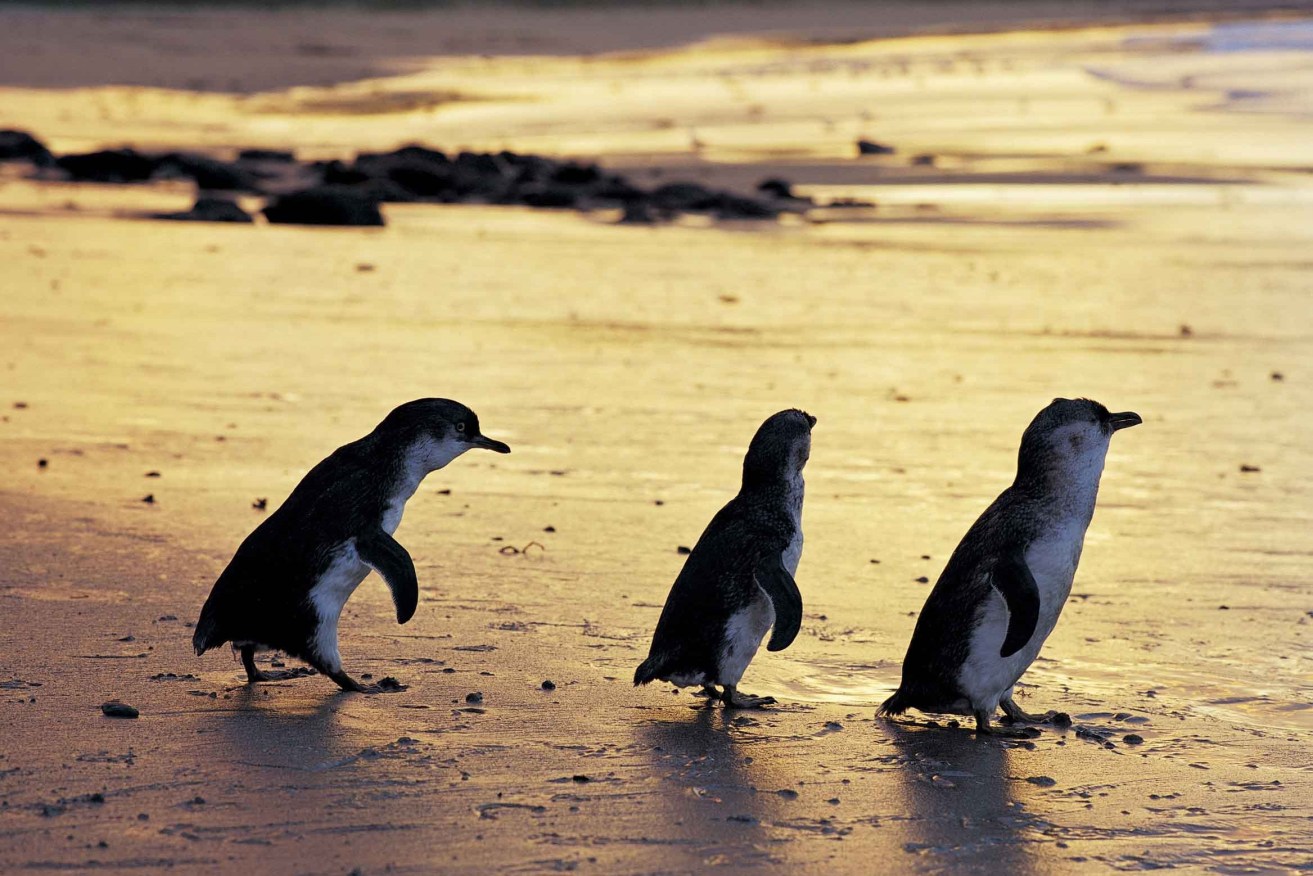
Photo: Phillip Island Nature Park/PA Wire
A cold wind whips up from the southern ocean, lashing the faces of three dozen people clambering along huge boulders that encircle the popular island off Victor Harbor.
These volunteers – citizen scientists – are searching for penguin burrows. If they’re lucky, they’ll find one of these muddy rock shelters occupied with one or two tiny, fat, blue-feathered chicks, awaiting the return of their parents from a day fishing for garfish or sardines at sea.
More likely, they’ll find a burrow wafting the fishy odour of penguin poo – a sign that the hideaway is occupied, but its residents are out grabbing a feed.
Today, there’s not much to report – 11 active burrows and one chick sighting.
Arisha Silverlake, a biodiversity and conservation honours student at Flinders University, led one of the volunteer groups scrambling over rocks on the south side of the island – one of the least accessible parts of the island for people and pests.
“We knew of two of the active burrows, but we found a third one that definitely had a penguin in it,” says Silverlake.
She’s upbeat. Because as we learn, finding penguins on Granite Island is an increasing rarity.
“And then we found three more that look very promising, so they should have penguins in them: so six altogether. We found four on that side last year – that’s an increase of two, which is great news.”
Great news today, and with counting by another group on the eastern side of the island, that means the survey estimates 22 birds on the island. There’s optimism among the volunteers, who include members of a local conservation group, and ecology students from the state’s universities keen to witness environmental science in action.
But in a historical context, the prospects for penguins for this community are a stark – and sad – contrast to what locals might have expected 20 years ago.
Indeed, had you told a South Australian that Granite Island would have short of two dozen of these birds in two decades, you’d probably be laughed away.
The decline, as we discover, is a perfect indication of the mismatch between the overall health of a species across the wide brown land of Australia and its constituent populations.
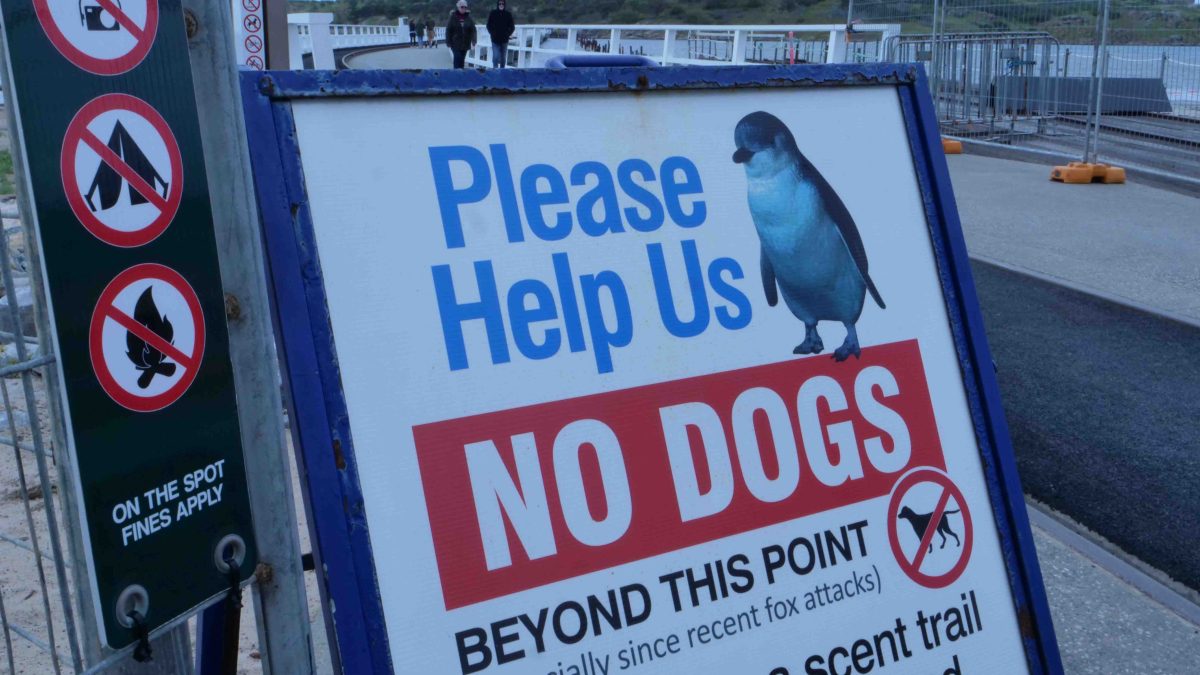
Signage at Granite Island. Photo: Matthew Agius
Where big hides small
Eudyptula minor aren’t looking likely to be added to Australia’s list of threatened species any time soon.
Right now, on Phillip Island in Victoria there are at least 40,000 little penguins.
That’s in part due to a bounty of fish prey in the waters surrounding the island – perfect for adult penguins needing to return to hungry mouths at home.
“Sardines and anchovies are the superfoods for penguins. When these are around, penguins thrive, and that’s what we are seeing now,” explains Phillip Island Nature Parks’ research technical officer Paula Wasiak.
Forty-thousand is a big number of birds. So too are the 5440 which waddled ashore one night in October – a record for the nightly Penguin Parade that enthrals Phillip Island visitors every night of the year. The sight of this nocturnal march has big benefits for the coffers as well.
Estimates suggest this colony injects $500 million into the Victorian economy and directly employs around 200 people. In the 2019-20 financial year – a COVID-impacted season – almost over 485,000 visitors attended the spectacle. That’s a boon for local businesses and for ecotourism, they even had their own TV special on the public broadcaster. With such popularity, you’d think other places should take up such an opportunity.
Granite Island, though smaller than Phillip, is located at the end of a newly refurbished causeway connected to the popular seaside town Victor Harbor on the Fleurieu Peninsula, just 80 minutes from the more than one million people of the state capital, Adelaide.
Marine ecotourism has long been part of this region’s fabric: It’s home to dolphins (Delphinus delphis), long-nosed fur-seals (Arctocephalus forsteri) and visiting southern right whales (Eubalaena australis) and tourism operators across the region provide opportunities on land and sea for visitors to witness them.
Little penguins on Granite Island were once a significant drawcard as well. Though never at the levels of abundance seen on Phillip Island, Victor Harbor’s local penguin population was several thousand at the turn of the century, and their own nightly march drew frequent gasps of wonder from adults and children visiting the area.
Within 20 years, their population had declined to a number that could be counted on two hands.
And though recent ecological surveys by Flinders University’s BirdLab show their number to be at least two dozen now, it’s hard to see the colony being restored to its former glory without significant action.
The flow-on effects to the local community, from the decline in penguin numbers, are also significant.
As a tourism drawcard, their decline has also seen a drop in tour participants. Estimates 10 years ago suggested that, annually, 25,000 people participated in a night-time penguin tour. Since then, the Island’s penguin centre has closed, and numbers have dwindled.
“Prior to Covid-19, it was estimated that little penguins could attract around 10,000 people to penguin tours,” Victor Harbor mayor Dr Moira Jenkins tells Cosmos.
“Granite Island is a popular attraction in Victor Harbor and a key reason why many travellers visit our coastal town. The council has always held the view that Little Penguin conservation must be a priority in order to retain tourism value of the island.”
The council, while representative of the local community, has little jurisdiction over the island and its natural inhabitants though. Custodianship of the island rests with the state environment department; the newly renovated causeway is managed by the transport department. The only business footprint on the island belongs to a privately run café on its north side.
Former tour operator Stephen Hedges now coordinates a local volunteer group that works with Flinders’ University BirdLab to monitor the species on the island each night.
He reckons the economic value of the species to local operators was, at least, in the tens of thousands.
“And yet, we’ve let them slip through,” Hedges says.
But business interests extend on shore as well. While the decline in penguin spotters does not necessarily impact other ecotourism attractions, the decline of the species is something the local chamber of commerce would like addressed.
“Granite Island is one of Victor Harbor’s jewels in the crown for tourism and it serves as an ecological rich home, source of food and nesting area for a range of indigenous birds,” says Colin Shearing, who heads up Business Victor Harbor, the area’s chamber of commerce.
“Simply put, it is critical to Victor Harbor and the greater Fleurieu’s community and commerce sector, that the entire ecosystem is well-managed, nurtured and protected.”
Species loss in a microcosm
Before the turn of the millennium, surveys indicated over 3,000 birds were present on Granite Island. High abundance was a similar story for many other islands dotted along South Australia’s 4000 kilometres of coastline.
But data is aging, and as the threat of climate change marches on, it’s difficult to know what the state of the species’ conservation is. Pearson Island on state’s far west coast was the supposed home of 12,000 of the species, but that data is approaching 20 years of age.
Troubridge Island off the state’s Yorke Peninsula – about 100km north-east of Granite Island – is home to another colony. From 3000 birds in a 2009 survey, numbers were estimated at just 450 in 2017. Emu Bay on Kangaroo Island was surveyed at just under 300 birds in 2008, within a decade, follow-ups suggest numbers may now be a quarter of that.
Monitoring is difficult. As the state’s environment department notes, “Little penguins mostly occur at sea and on numerous – about 80 to 85 – seldom-visited islands in South Australia.”
“They are logistically difficult to monitor in a repeatable and regular way,” says the department’s Director of Conservation and Wildlife, Lisien Loan. “Detectability and the numbers present both vary throughout the year.”
At least for Granite Island, the department implements several tactics to reduce threats to its wildlife. These include long-term black rat baiting programs, a recently installed fox gate on the causeway, night closures of the island and during “high risk events such as the schoolies festival”.
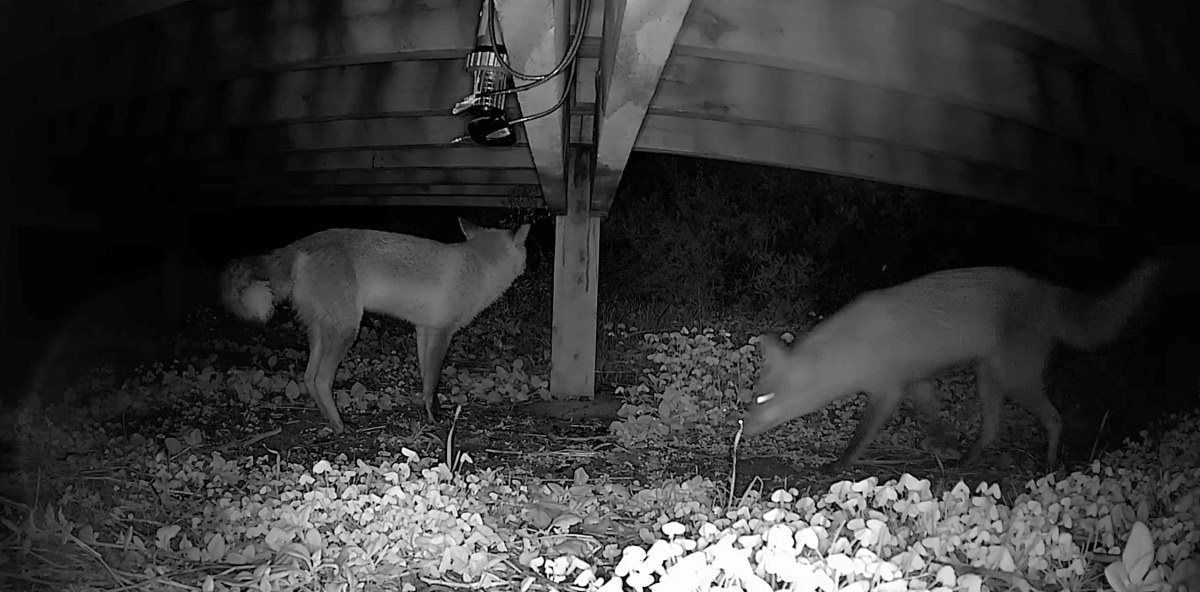
Foxes captured on Granite Island.
Although funding for regular surveys is scarce, Dr Diane Colombelli-Negrel, a director of the Flinders University Birdlab project, has continued to assess key colonies where there is a strong understanding of historic breeding success. According to her data, Kangaroo Island’s Penneshaw colony – 65km from Granite Island – appears to be “booming”, while others have seen mixed success in recent years.
The reason for Granite Island’s decline appears to be a decade-long drought at the nearby Murray Mouth, 25km east across Encounter Bay – where Australia’s largest river system empties into the Southern Ocean.
A study led by Colombelli-Négrel this year found the river’s reduced outflows during the drought contributed to penguin declines. It also attributed increased sea surface temperatures to species reduction. Both of those factors are expected to be exacerbated by climate change increasing the number and duration of droughts, and warming oceans.
Should that further reduce garfish numbers in the region, then the penguins will find themselves in greater competition for limited food resources with other species, like long nosed fur seals.
Fur seals also enjoy the taste of little penguins…
“We know that little penguins like to forage near river estuaries… so we started looking at the Millenium Drought and how that affected river outflow to the ocean,” Colombelli-Négrel tells Cosmos.
“When the drought happened, the river flow to the ocean went to zero… and that’s when the little penguin population started declining. In 2010, when the flow started going into the ocean, that’s when the population started stabilising, and we found an interaction between rainfall, river outflow, primary connectivity, the fish, which are obviously directly impacted as well, and the penguins. It’s all linked together.”
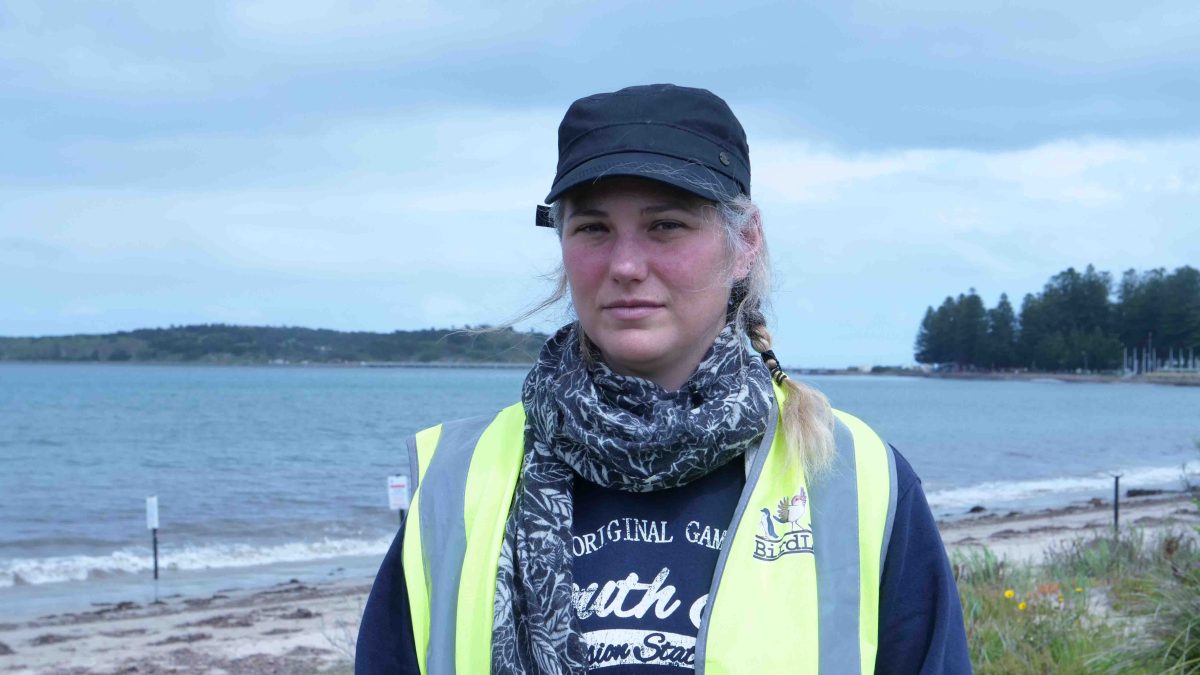
Dr Diane Colombelli-Negrel, a director of the Flinders University Birdlab project. Photo: Matthew Agius
Climate change won’t just affect penguins in South Australia.
In New South Wales, there is one known mainland breeding colony of little penguins, in the seaside suburb Manly. That colony is endangered under the state’s environmental legislation and, since 2007, has a dedicated recovery plan and team. Despite the threat of fox attacks (27 birds were killed in 2015), the population remains stable at 40 breeding pairs. The NSW Environment Department pointed Cosmos to its Seabirds to Seascapes program as an example of its undertaking to maintain the species’ population along the coast. This includes penguin colony censuses, coastal habitat restoration and fur seal monitoring, as well as genetic tracking of penguins to understand their movements.
Western Australia’s little penguin population is also vulnerable – particularly to heating oceans.
Dr Belinda Cannell from the University of Western Australia has been tracking the species for decades and is currently preparing research into the impact of marine heatwaves off Australia’s south-western coast.
“We had a severe marine heatwave in 2011, which recorded water temperatures three to five degrees above average,” she says. “That had a huge impact on food resources … the species and abundance … in the areas that the penguins forage in, and the location of where those fish were.
“The other reason why we have high mortality here is that the birds get hit by watercraft.”
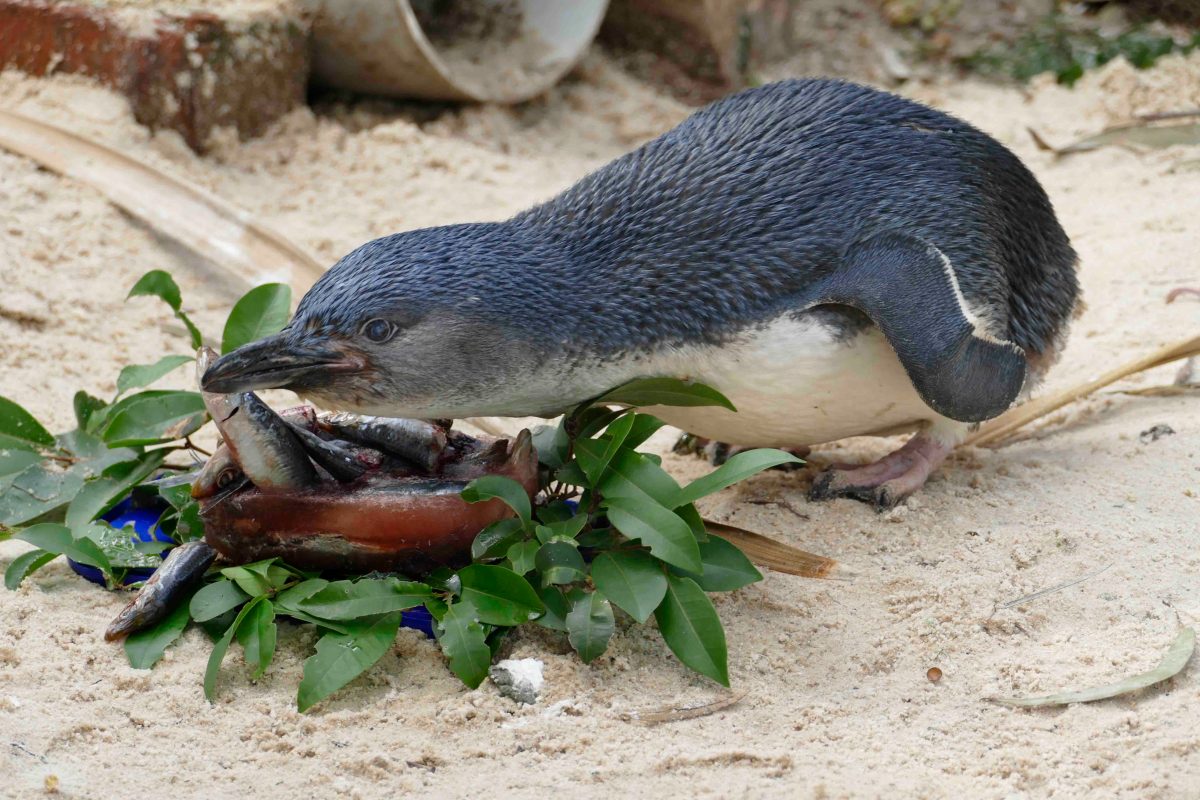
‘Gordon’ the little penguin at Adelaide Zoo. Photo: AAP/Adelaide Zoo
The aptly named Penguin Island is a tourism destination off the Perth coast. Like Granite Island, it’s seen a large decline in numbers, although Cannell notes that the reasons for this are many, and complex.
Some of these are similar to other colonies along the continental south-east, some are more pronounced. Hyperthermia – overheating – for instance, is perhaps more prevalent in the west. Perth typically has the hottest summers of southern capitals, which will increase in a changed climate.
“It is a complex situation and there’s not one easy answer,” Cannell says.
“So [addressing] climate change, and tourism – managed well – I think is probably the catch all for everything.”
In September, Cosmos looked into how Australia’s species are assessed under the Environmental Protection and Biodiversity Conservation Act – legislation that will be overhauled by the Albanese Government in 2023.
Because of the large populations in select areas of the coast – like Phillip Island – the species won’t be formally threatened on a national scale any time soon, though like New South Wales, subnational jurisdictions could make their own assessments under state legislation.
In South Australia, the species’ conservation status remains uncertain. Assessments undertaken last decade do suggest – using international standards – that its populations are ‘Near Threatened’. In the Adelaide and Mount Lofty ranges – an assessment area which includes Fleurieu Peninsula colonies, it is critically endangered.
And that’s now being felt in the community.
“We keep saying ‘I remember when…’” Hedges says, of the habit of locals to reminisce of a time where local species were greater in number.
“We often take for granted what’s in our own backyard… The numbers are so low that among people there’s a general feeling that they’ve almost gone.
“It would be wonderful to turn it around and have some good news at the end of ‘I remember when…’”.
This article is republished with permission from Cosmos Magazine.




